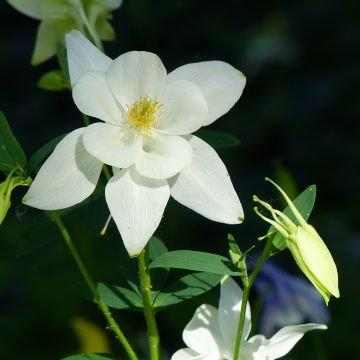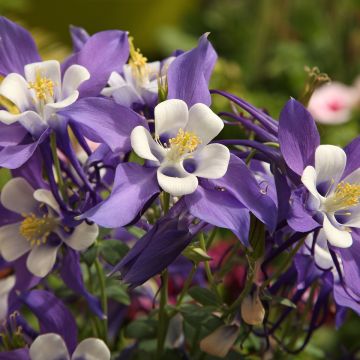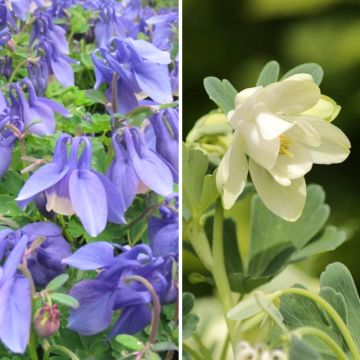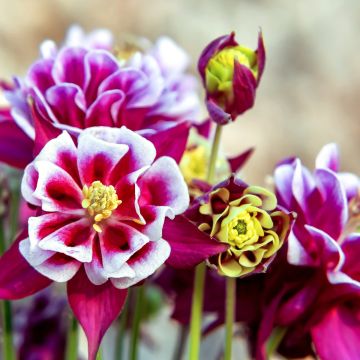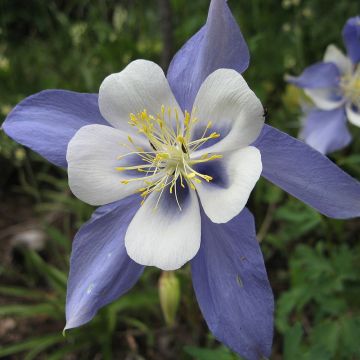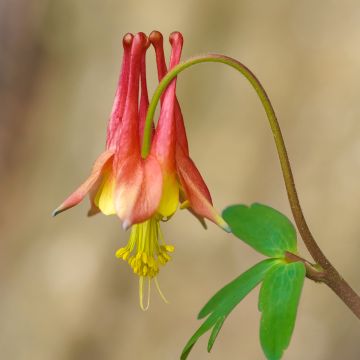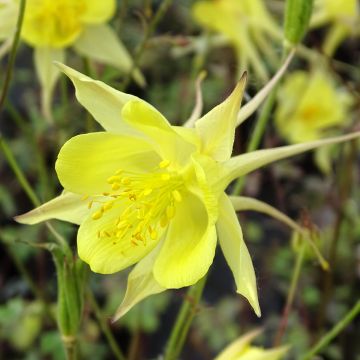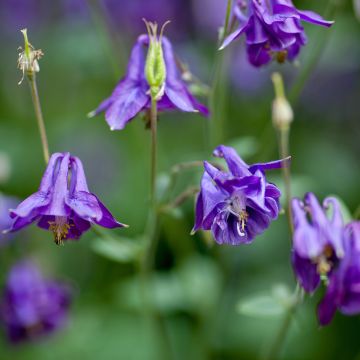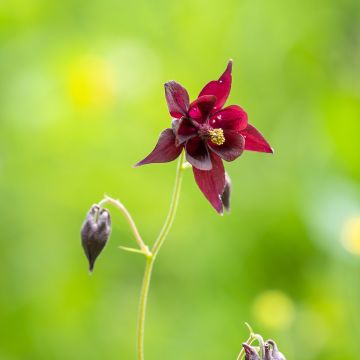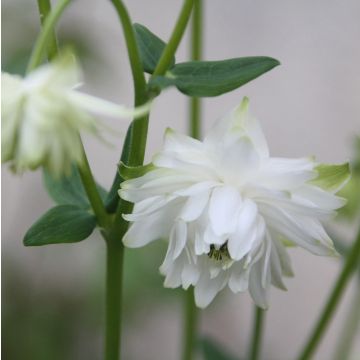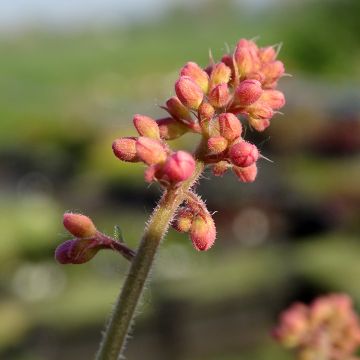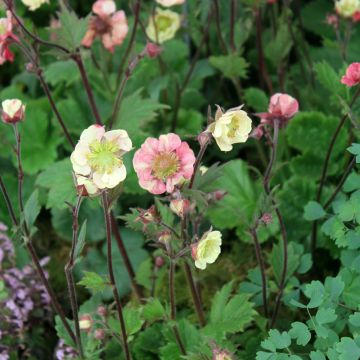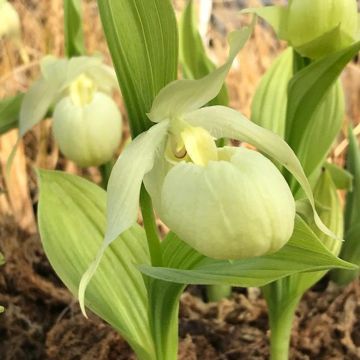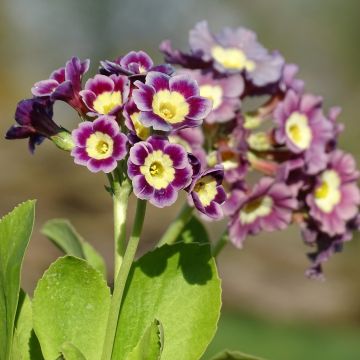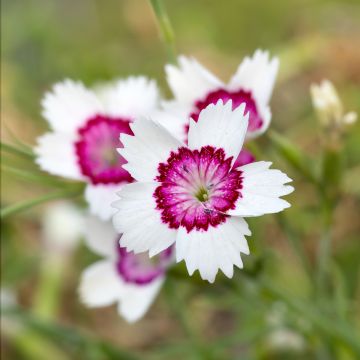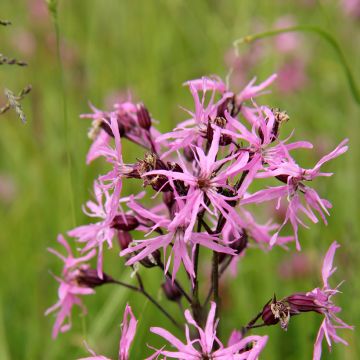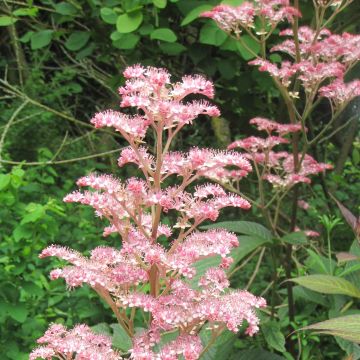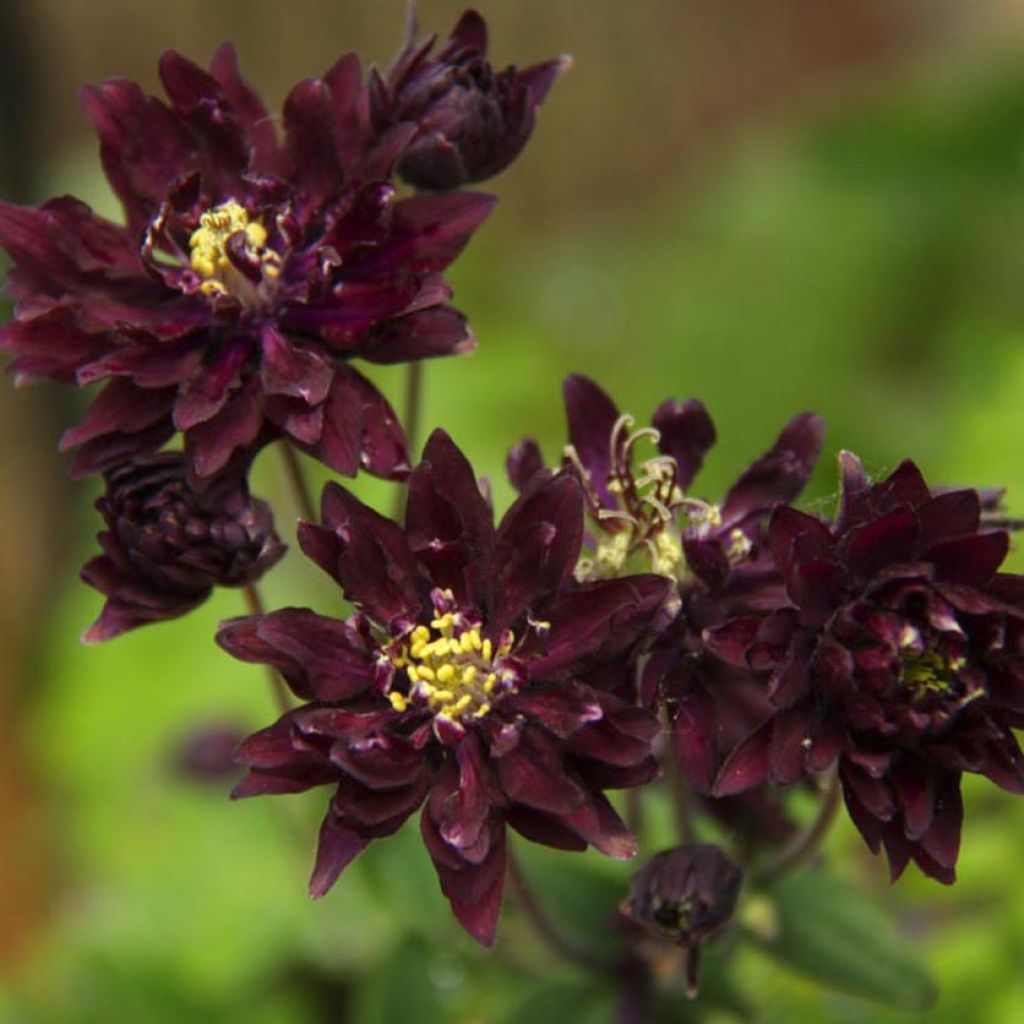

Aquilegia vulgaris Clementine Dark Purple - Columbine
Aquilegia vulgaris Clementine Dark Purple - Columbine
Aquilegia vulgaris Clementine Dark Purple
European Columbine, Common Columbine, Granny's Nightcap, Granny's Bonnet
I am a huge fan of these flowers that I have captured in various colours. Good recovery. Perfect.
Mael B., 20/06/2018
This plant carries a 12 months recovery warranty
More information
We guarantee the quality of our plants for a full growing cycle, and will replace at our expense any plant that fails to recover under normal climatic and planting conditions.
From €5.90 for pickup delivery and €6.90 for home delivery
Express home delivery from €8.90.

Does this plant fit my garden?
Set up your Plantfit profile →
Description
Aquilegia vulgaris 'Clementine Dark Purple' is another hybrid columbine from the Clementine series; this one stands out for its very dark purplish colour and upright flowers that face towards the sky. It belongs to a new series of compact and long-lasting cultivars, very on-trend and particularly suitable for pots. This very hardy perennial blooms throughout the spring and is really easy to grow in any type of soil.
Aquilegia vulgaris 'Clementine Dark Purple' belongs to the family of ranunculaceae. It is a cultivar derived from Aquilegia vulgaris (or clematiflora), native to Europe, North Africa, and temperate Asia, where it grows in deciduous forest clearings and meadows. It is a very hardy herbaceous perennial that forms a compact and upright leafy clump, 30 cm (12in) tall and 35 cm (14in) wide from which long flowering stems branch upwards. From May to June-July, charming double flowers bloom on stems up to 40 cm (16in) tall. Unlike the corollas of other columbines, they lack long horned spurs and are not facing towards the ground; they open widely towards the sky, revealing a pale yellow throat with pale yellow stamens. Its deciduous blue-green foliage is quite decorative, and the serrated basal leaves give a sense of lightness.
Horned columbines were cultivated in medieval flower beds, and the tradition was perpetuated by cottage gardens. Compact and unassuming, they are essential in mixed borders, where they bring lightness and charm. The varieties from the Clementine series are compact and very floriferous so grow very well in pots. They can also be planted in many different areas of the garden, making sure to leave a space of 20 cm (8in) around each plant: in the middle of a perennial bed, in a border, at the base of bushes, on the edge of woodlands, or on a slope. They will look stunning when planted in groups to create a dense clump. Pick them just as they start to open for beautiful country-style bouquets. In flower beds, in a cottage garden style, 'Clementine Dark Purple' can be combined with all kinds of perennials, such as foxgloves, bleeding hearts, or peach-leaved bellflowers.
Report an error about the product description
Aquilegia vulgaris Clementine Dark Purple - Columbine in pictures
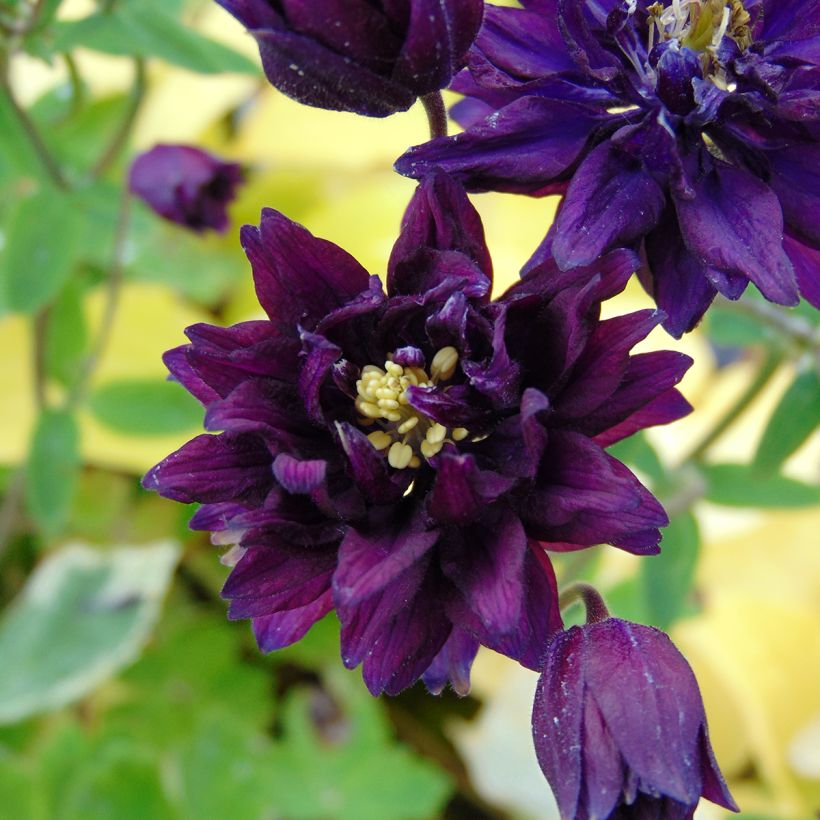

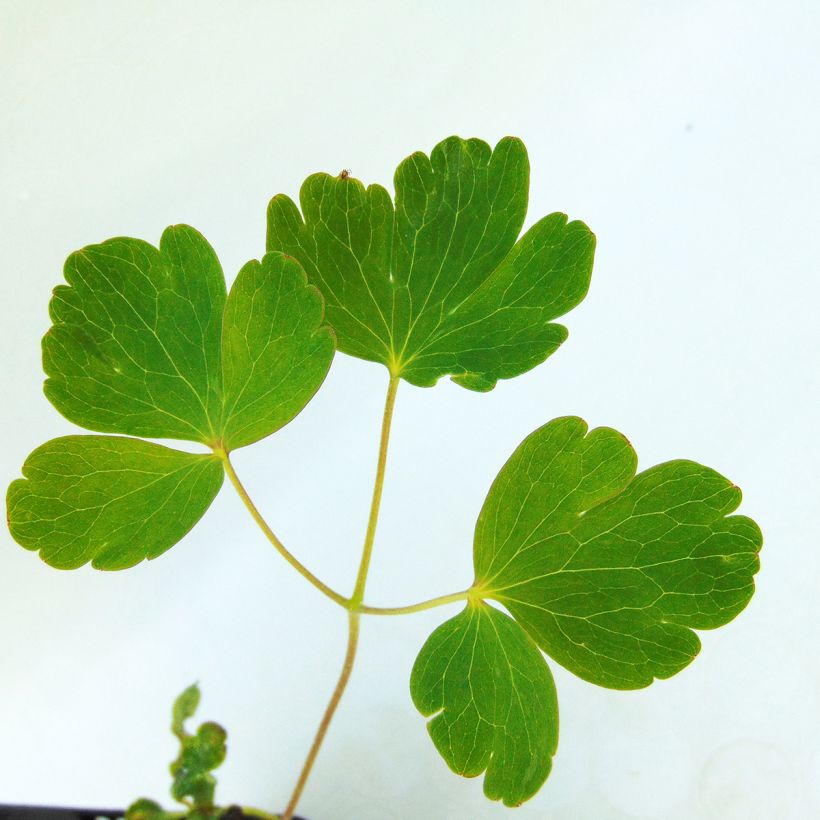

Flowering
Foliage
Plant habit
Botanical data
Aquilegia
vulgaris
Clementine Dark Purple
Ranunculaceae
European Columbine, Common Columbine, Granny's Nightcap, Granny's Bonnet
Cultivar or hybrid
Other Aquilegia
Planting and care
Aquilegia vulgaris 'Clementine Dark Purple' is very hardy and thrives in any exposure, with a preference for non-scorching sun or light shade. Any ordinary, even limestone, soil suits it as long as it is light, moist, and humus-rich. Planting is best done in spring, from March to April, or in September. Though highly resistant to diseases, it can sometimes be attacked by aphids and caterpillars and attack by snails and slugs is common on young plants. Columbines easily self-seed in the garden, so leave some flower stalks after flowering to produce seeds. Only keep stems of the most vigorous plants as this operation exhausts the plant and reduces its longevity, which is rather short for a perennial, 3 to 4 years. Seed-grown plants can be interesting, but not necessarily true to the parent plant.
Planting period
Intended location
Care
-
, onOrder confirmed
Reply from on Promesse de fleurs
Spring flowering perennials
Haven't found what you were looking for?
Hardiness is the lowest winter temperature a plant can endure without suffering serious damage or even dying. However, hardiness is affected by location (a sheltered area, such as a patio), protection (winter cover) and soil type (hardiness is improved by well-drained soil).

Photo Sharing Terms & Conditions
In order to encourage gardeners to interact and share their experiences, Promesse de fleurs offers various media enabling content to be uploaded onto its Site - in particular via the ‘Photo sharing’ module.
The User agrees to refrain from:
- Posting any content that is illegal, prejudicial, insulting, racist, inciteful to hatred, revisionist, contrary to public decency, that infringes on privacy or on the privacy rights of third parties, in particular the publicity rights of persons and goods, intellectual property rights, or the right to privacy.
- Submitting content on behalf of a third party;
- Impersonate the identity of a third party and/or publish any personal information about a third party;
In general, the User undertakes to refrain from any unethical behaviour.
All Content (in particular text, comments, files, images, photos, videos, creative works, etc.), which may be subject to property or intellectual property rights, image or other private rights, shall remain the property of the User, subject to the limited rights granted by the terms of the licence granted by Promesse de fleurs as stated below. Users are at liberty to publish or not to publish such Content on the Site, notably via the ‘Photo Sharing’ facility, and accept that this Content shall be made public and freely accessible, notably on the Internet.
Users further acknowledge, undertake to have ,and guarantee that they hold all necessary rights and permissions to publish such material on the Site, in particular with regard to the legislation in force pertaining to any privacy, property, intellectual property, image, or contractual rights, or rights of any other nature. By publishing such Content on the Site, Users acknowledge accepting full liability as publishers of the Content within the meaning of the law, and grant Promesse de fleurs, free of charge, an inclusive, worldwide licence for the said Content for the entire duration of its publication, including all reproduction, representation, up/downloading, displaying, performing, transmission, and storage rights.
Users also grant permission for their name to be linked to the Content and accept that this link may not always be made available.
By engaging in posting material, Users consent to their Content becoming automatically accessible on the Internet, in particular on other sites and/or blogs and/or web pages of the Promesse de fleurs site, including in particular social pages and the Promesse de fleurs catalogue.
Users may secure the removal of entrusted content free of charge by issuing a simple request via our contact form.
The flowering period indicated on our website applies to countries and regions located in USDA zone 8 (France, the United Kingdom, Ireland, the Netherlands, etc.)
It will vary according to where you live:
- In zones 9 to 10 (Italy, Spain, Greece, etc.), flowering will occur about 2 to 4 weeks earlier.
- In zones 6 to 7 (Germany, Poland, Slovenia, and lower mountainous regions), flowering will be delayed by 2 to 3 weeks.
- In zone 5 (Central Europe, Scandinavia), blooming will be delayed by 3 to 5 weeks.
In temperate climates, pruning of spring-flowering shrubs (forsythia, spireas, etc.) should be done just after flowering.
Pruning of summer-flowering shrubs (Indian Lilac, Perovskia, etc.) can be done in winter or spring.
In cold regions as well as with frost-sensitive plants, avoid pruning too early when severe frosts may still occur.
The planting period indicated on our website applies to countries and regions located in USDA zone 8 (France, United Kingdom, Ireland, Netherlands).
It will vary according to where you live:
- In Mediterranean zones (Marseille, Madrid, Milan, etc.), autumn and winter are the best planting periods.
- In continental zones (Strasbourg, Munich, Vienna, etc.), delay planting by 2 to 3 weeks in spring and bring it forward by 2 to 4 weeks in autumn.
- In mountainous regions (the Alps, Pyrenees, Carpathians, etc.), it is best to plant in late spring (May-June) or late summer (August-September).
The harvesting period indicated on our website applies to countries and regions in USDA zone 8 (France, England, Ireland, the Netherlands).
In colder areas (Scandinavia, Poland, Austria...) fruit and vegetable harvests are likely to be delayed by 3-4 weeks.
In warmer areas (Italy, Spain, Greece, etc.), harvesting will probably take place earlier, depending on weather conditions.
The sowing periods indicated on our website apply to countries and regions within USDA Zone 8 (France, UK, Ireland, Netherlands).
In colder areas (Scandinavia, Poland, Austria...), delay any outdoor sowing by 3-4 weeks, or sow under glass.
In warmer climes (Italy, Spain, Greece, etc.), bring outdoor sowing forward by a few weeks.

































